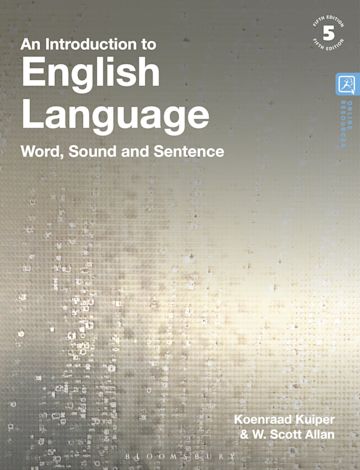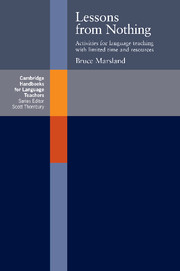مقالات حوزه آموزش زبان Teaching
در این مطلب لیستی از مقالات حوزه آموزش زبان Teaching را در اختیار اساتید و دانشجویان گرامی قرار می دهیم.جهت دسترسی به مقالات تنها کافی است برروی لینک ها کلیک کنید.

Teaching theory & practice
Approaches & Methods in Second Language Teaching
The following articles are suitable for teachers and students on TEFL Certificate or Diploma Courses or on ‘TEFL / Applied Linguistics related’ MA or MBA Degree Courses.
- 01 English Pronunciation and Listening to spoken English
- Priorities and materials for phonology and phonetics
- British English consonant sounds – i. final blends ii. assimilation
- British English vowel sounds – monophthongs
- British English vowel sounds – diphthongs
- Specifying the priorities for pronunciation teaching
- Teaching intonation, rhythm and stress
- Speech versus written English
- Listening to spoken English: techniques for L2 learners
- Should spoken English be the principal objective in language learning?
- idiom, cliché, jargon, slang, motto, phoneme, allophone, redundancy
- 02 Syntax & Semantics
- Ways of presenting grammar
- Short Texts for production and grammar presentation
- Dialogues for grammar-presentation or conversation-facilitation
- Function & Form: uses of the Present Perfect Tense
- Grammar content of FCE as covered in leading exam course books 1979-1987
- Key developments in the teaching of English vocabulary during the mid 20th century
- The importance of concordancers and corpuses in vocabulary learning and teaching today
- Choosing a dictionary for English language learning
- Functional and linguistic analysis of occupational varieties of English
- Specialist English dictionaries and companion workbooks to develop vocabulary
- 03 History and Practice of TESL /TEFL methods & approaches
- Audiolingualism (drilling as habit formation)
- Cognitive Theory (awareness of the rules) Mentalism
- Notional | Functional approach i.e. setting (topic areas) | speech acts (social purpose of utterance)
- The Communicative Approach – the theoretical background
- Communicative Language Teaching and task-based learning
- Definitions of learning
- 04 Language Acquisition Forum on current methods & approaches and the role of the teacher
- “The appeal & poverty of CLT” (Robert O’Neill: March 2000)
- “The limits of functional/notional syllabuses” (Robert O’Neill: 1997)
- “Crucial differences between L1 and L2 Acquisition” (Robert O’Neill: 1998)
- “Dogmas and Delusions in Current EFL Methodology” (Robert O’Neill: 1999)
- “The Myth of the Silent Teacher” (Robert O’Neill: April 1994)
- Verbal characteristics of good teacher-talk. How to be a good teacher: the most common tips.
- What makes a good teacher? Use marketing clichés, catch-phrases and jargon in your answers.
- 05 Principles Syllabus and Course Design
- 06 Methods of Testing and Assessment
- INDEX: to Language Testing Objectives
- Objectives of test types: a) aptitude b) placement c) diagnostic d) achievement e) proficiency
- What are a) discrete point tests b) tests of integrative skills?
- Subjective and objective testing techniques
- Standardized tests (“psychometric objective” & “linguistic realistic”)
- The main requirements of an efficient test – the problem of “test rubric”
- Item analysis – the facility value of an item and its discrimination index
- The problems of assessing communication in a second language L2
- What are a) norm-referenced tests and b) criterion-referenced tests?
- Test reliability and validity: the most important aspects of both for the teacher / tester?
- 07 Developing a Placement Test
- Getting started & types of test to avoid
- Content specification
- The Placement Test
- Marking instructions and Answer Key
- Item Analysis for selective deletion Placement Tests set on an incline of difficulty
- Testing the test 1: Item analysis: facility value and discrimination index
- Testing the test 2: Statistical measures of the Mean, Standard Deviation and Reliability
- Reliability versus Validity
- Accommodating “complete beginners” during a 60-minute Placement Test and Bibliography on Language Testing
- 08 A Multiple Choice Placement Test designed for quick marking and optimum validity
- Part 1 Grammar
- Part 2 Vocabulary
- Part 3 Reading Comprehension
- Part 4 Listening Comprehension
- Tape Script for Part 4 Listening Comprehension (cassette, minidisk or teacher can read aloud)
- Protecting TEST QUESTION PAPERS for re-use by subsequent intakes of students
- ANSWER SHEETS WITH GRIDS and OVERLAYS for easy marking
- Using computers or computer labs with or without Internet to administer and mark the test
- 09 Reading in the Second Language Class
- 10 Writing in the Second Language Class
- 1) Exercise-types for teaching writing in the second language class. 2) Is writing an extension of speaking?
- Adjusting lesson content to the contexts in which writing is needed
- Coherence and cohesion in esl student writing
- Correction techniques: behaviourist (steering round errors) v cognitive (earmarking the fault)
- Link to Adult Literacy Materials for zero beginners with no knowledge of our alphabet
- Link to BBC Skillwise: writing – a community web site, offering general writing tips and practice for learners at lower levels
- Link to Royal Literary Fund – help with essay writing for advanced learners hoping to attend UK universities
- Link to Letter writing guide – (1) advice (2) samples of letters written for different purposes
- 11 Learner Independence; Learner Autonomy and the Web; Self-access Centres and Practice Time


